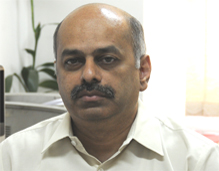North Korea’s ‘Chemistry’ with WMDs
Post the 2003 Iraq war, the debate regarding weapons of mass destruction (WMD) was confined mostly to the realm of nuclear weapons for more than a decade. The perception that WMDs are not for actual use but for deterrence broadly continues to hold in the post Cold War period too. However, it is also a fact that certain categories of WMD like chemical weapons (CW) have been used during the Cold War. In the post Cold War era too, the Syrian conflict and the alleged use of CW to kill the half-brother of North Korea’s leader Kim Jong-un in Malaysia continues to shine a spotlight on the dangers of the use of such weapons.
In the post 9/11 period, it was professed that the major threat in the realm of WMDs could emerge mainly from the international terror groups. The use of CW in Syria in August 2013 however dealt a blow to this thinking. It was confirmed by the United Nations that the CW were used at a location called Ghouta (suburb in Damascus), killing nearly 1,500 civilians. These weapons were found used at few other locations in Syria during earlier occasions too. President Barack Obama had asserted in 2012 that any possible usage of chemical weapons would amount to crossing a ‘red line’, which would invite a US military response. The military intervention by the US forces in Syria did happen few months after the use of CW by the Syrian forces (or by rebel forces as claimed by the Assad regime).1 CW were also used as the bargaining tools in the West Asian geo-political theatre. One of the reasons for Libya to join the Chemical Weapons Convention (CWC) by declaring its weapons stockpile during 2004 was Gaddafi’s desperation to normalise relations with the Western world.
North Korea has blatantly breached the CW ‘red line’ in a very peculiar manner in the latest incident. Kim Jong-nam was killed on February 13 at Kuala Lumpur airport while he was waiting to catch a flight. Two women wiped a substance on his face leading to his death within 20 minutes. It has been found that the substance used for this killing was a nerve agent called VX. This agent is considered as one of the most potent chemicals which affects the nervous system and disturbs the functioning of human muscles eventually leading to death. This substance is derived from organophosphate pesticides and its lethal dose ranges from about 10 milligrams via skin contact to 25-30 milligrams, if inhaled.2 This substance has been classified by the United Nations as a WMD.
The attack was a bit of a surprise as Pyongyang had not given any indications regarding a renewed interest in CW. For more than a decade now, North Korea has been attracting global attention by undertaking nuclear tests and launching missiles. They have also undertaken few satellite launches by using their own rockets. By successfully orchestrating an assassination by using CW, North Korea has succeeded in sending a message that they are not averse to using the WMD in their possession. Kim Jong-un is keen to ensure that no challenge emerges to his position from his extended family. From the North Korean point of view, the use of VX agent was a perfect choice, because this agent is known to cause instant death.
The most appalling aspect of the killing was that though the victim died within about 20 minutes, nothing is known to have happened to the women who were seen to have used their hands to apply the VX agent on the face of the victim. This clearly indicates that some successful method has been devised to protect the women from the dangerous affects of the nerve agent. Also, the production of VX is not a simple task and requires a lot of technological sophistication. The major question which remains unanswered though is the manner in which the deadly CW reached Malaysia.
North Korea is alleged to have the world’s third-largest stockpile of CW. They are known to have produced agents like Sarin, VX, Mustard, Tabun and Hydrogen Cyanide. North Korea is one of the three states (apart from Egypt and Sudan) that has not signed or acceded to the CWC. It is believed to be producing CW since the 1980s and is now estimated to have stockpiles of around 25 chemical agents amounting to approximately 5,000 tons. North Korea is also known to have made investments in biological weapons, and believed to be having 12-13 types of biological weapons, including anthrax, plague, among others.3
North Korea has taken the biggest of political risks by using CW at this point in time and that too in a friendly foreign state. North Korea and Malaysia established bilateral relationship more than 45 years ago. Both the states opened embassies at Kuala Lumpur and Pyongyang in 2003. Since 2009, Malaysians did not require a visa to travel to North Korea (and vice versa). After the airport incident, North Koreans are now required to obtain a visa to visit Malaysia.
The incident is also spoiling the important relationship that Pyongyang shares with its all-weather friend, China. Beijing has been extremely upset with the brazen missile testing undertaken by North Korea in recent times. China, which was importing coal from North Korea in spite of the UN sanctions, decided to suspend all imports on February 19. For the Trump administration, dealing with North Korea will continue to be a major challenge. The CWC, considered one of the most successful arms control treaty mechanisms in the world and which would be celebrating its twenty years of existence in April 2017, continues to face serious challenges even today.
Views expressed are of the author and do not necessarily reflect the views of the IDSA or of the Government of India.
- 1. Human Rights Watch, February13, 2017
- 2. https://www.nytimes.com/2017/02/24/world/asia/vx-nerve-agent-kim-jong-nam.html?_r=0
- 3. http://www.reuters.com/article/us-northkorea-malaysia-kim-idUSKBN16303Z; http://indianexpress.com/article/world/what-chemical-weapons-does-north-korea-possess-4541910/








